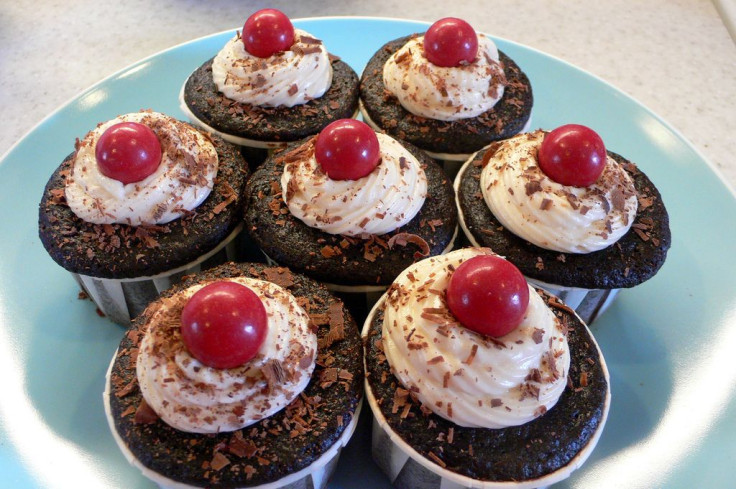Full Frontal Exposure: 7 Little-Known Facts About Nipples Everyone Should Know

All men and women have nipples in common. They’re located on the chest and tend to be sensitive to the touch. However, do you ever wonder why we have nipples and what their capabilities are?
In women, the main purpose of nipples is to deliver infant milk that is produced in the female mammary glands during lactation. In men, the nipples have no function in relation to breastfeeding, although they can lactate. Men do have mammary glands, but normally there is so little mammary tissue that it is unnoticeable. This is why breast cancer can occur in both genders, although it is about 100 times less common among men than women, according to the American Cancer Society.
Now, aside from lactating or sexual pleasure, have you ever thought about or paid attention to your nipples? Here’s a rundown of nipple facts everyone (both men and women) should know:
1. Everyone develops nipples in the womb.
Despite whether you’re male or female, all embryos begin life in the womb developing identically. It is only after 60 days of embryonic development that the Y-chromosome kicks in, changing the genetic activity of cells in the genitals and the brain. Germ cells start to undergo sex determination, and it is then that males will secrete factors that block the development of female ducts and structures, according to IFLScience. In other words, once the male embryo produces testosterone, the hormone is able to influence the other sex-specific traits in the body.
2. Nipples can leak fluid, even if you’re not pregnant.
Nipple discharge from a woman who is not pregnant or breastfeeding is not necessarily abnormal, but it should still be reviewed by a doctor. However, in men, nipple discharge under any circumstances could be a problem and should be evaluated by a doctor. Discharge may be produced when one or both breasts either release some spontaneously, says the Mayo Clinic, or when the nipples or breasts are squeezed. The nipple discharge may look milky, clear, yellow, green, brown, or bloody.
3. You can grow nipples in other places than your chest.
Typically, nipples develop along the embryonic milk lines, but there have been cases of nipples growing in unusual places like a foot. In a 2010 case study published in the Journal of Plastic, Reconstructive & Aesthetic Surgery, doctors wrote about a patient who had a nipple at the sole of his foot. Although they were unable to explain the development of this anomaly, they hypothesized several theories linked to disorders of the renal and cardiovascular systems, including the pathology that affects normal breast tissue.
4. You can grow more than two nipples.
Supernumerary nipples, also known as extra nipples, usually develop along the two milk lines that go from the armpit through the normal nipples and down to the sides of the groin. If the regular nipple formation process is incomplete and the tissue doesn’t fully regress, this is when additional nipples begin to form along the milk lines, according to Medline Plus. It’s also possible for a nipple to develop alongside breast tissue, which can lead to the development of three perfectly natural breasts. In a 2012 case study published in the Indian Journal of Human Genetics, a 32-year-old man was found to have seven nipples, becoming the second person in history with so many nipples.
5. 'The Great Nippulini' lifted over a 2,000-pound vehicle across a distance of 66 feet.
Sage Werbock, best known by his stage name, “The Great Nippulini,” has made a career of lifting or pulling heavy objects with his nipples. In 2009, he was able to lift 70 pounds of weights on each nipple, earning him the world record for the most weight lifted by nipples in 2009. The Great Nippulini performed another stunt in 2011 when he pulled a 2,200-pound vehicle across a distance of 66 feet.
6. Nipple orgasms are real.
Orgasms that are brought on by nipple stimulation can actually occur. A 2011 study published in The Journal of Sexual Medicine found when women were asked to stimulate their nipples, the same part of the brain connected with genital stimulation lit up. The researchers viewed the brain activity and proposed nipple stimulation and genital stimulation have the same effect.
7. Plastic surgery can reduce some or all sensation in your nipples.
Breast augmentation or breast reduction can be wondrous for several women, but it can lead to a loss of sensation in the nipples. A 2006 study by the American Society of Plastic Surgeons found the bigger the breast implant, the more likely the patient is to report a loss of sensation. This loss of sensation can still be present years after the surgery, although women still experience normal arousal and sensuality. Meanwhile, a breast reduction can lead to losing some or even all sensation.
Now these seven facts about your nipples will have you looking and thinking about them in a different way.



























